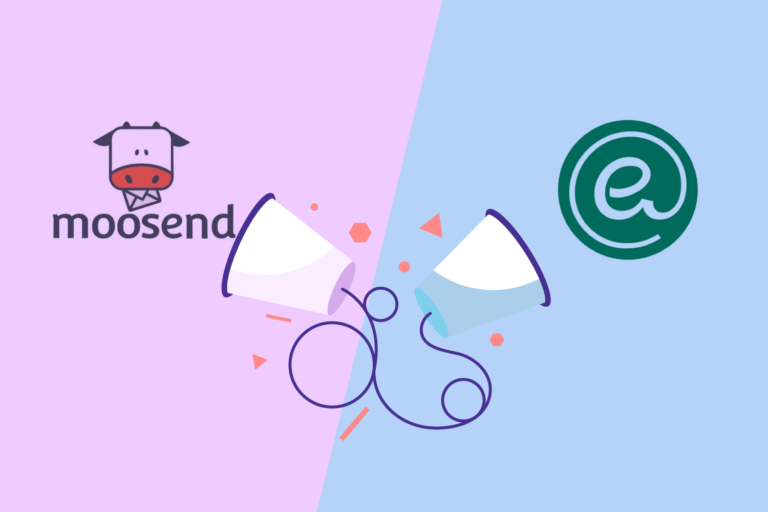Moosend vs tinyEmail: Which Email Marketing Platform Will Serve You Better in 2024?
Moosend vs tinyEmail stands out as a competitive platform in the email marketing industry, and picking the correct one is crucial from a strategic standpoint.
Businesses and individual marketers may benefit greatly from this analysis since it will shed light on the unique benefits and cutting-edge characteristics of each alternative.
Devote yourself to this in-depth analysis to discover the subtleties and benefits of Moosend vs tinyEmail, honing your understanding of the dynamic field of email outreach.
[ez-toc]
Moosend Vs tinyEmail: Overview
If you’re trying to decide between the two platforms for your email marketing, this overview should assist. We will go over the features and advantages of each.
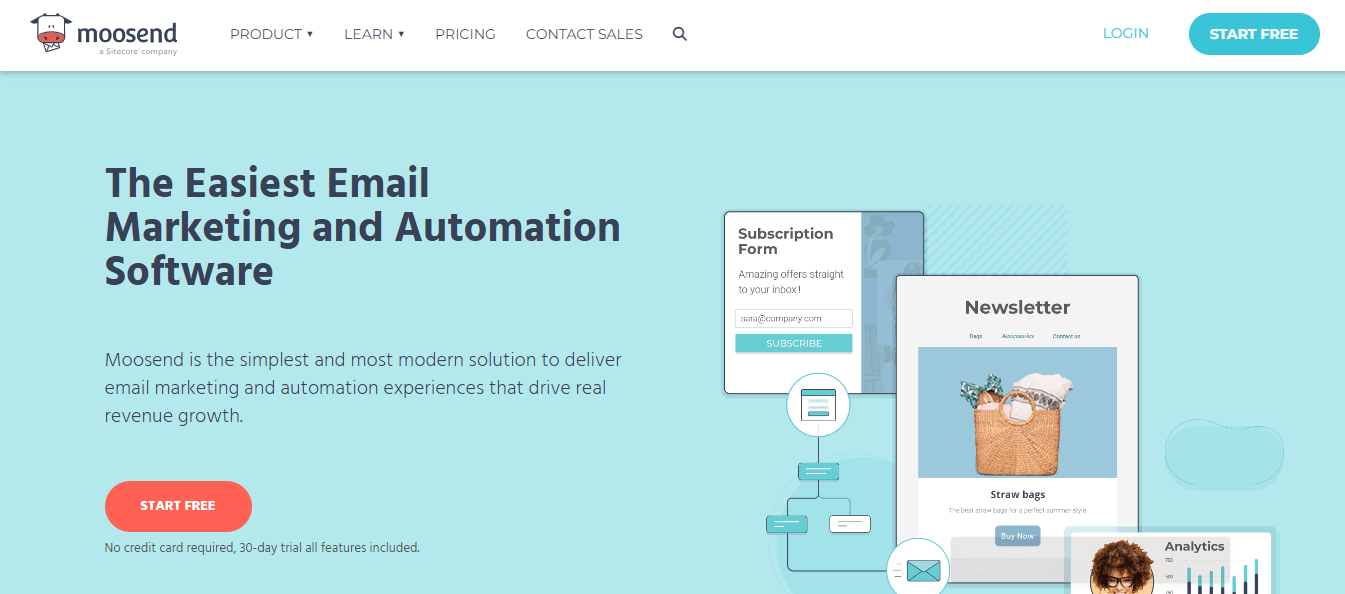
Moosend: What’s It?
With its user-friendly interface and plenty of useful features, Moosend stands out as a top-tier email marketing platform.
Email automation, customizable templates, in-depth analytics, and a user-friendly drag-and-drop editor are just a few of the features it offers.
Users will have an easier time navigating this email marketing tool because of its compatibility with many different platforms.
Moosend has been a favorite among a varied range of enterprises, both large and small, because to its versatility. Even those who aren’t very tech-savvy may jump in and learn everything about digital communication because to its user-friendly design, which in turn promotes a feeling of belonging and mutual education.
Moosend stands apart in the email marketing field because it harmoniously combines innovation, user-centric design, and multi-functionality.

tinyEmail: What’s it?
A modern player in the email marketing space, tinyEmail takes great satisfaction in its uncomplicated and user-friendly philosophy.
It’s easy to use and navigate thanks to its basic capabilities, which include list management, campaign monitoring, and basic email automation.
Its unique, simple style makes it stand out and makes it accessible to anyone with varying degrees of technical expertise.
For those who prioritize both practicality and ease of use, its simplicity does not diminish its effectiveness, making it a top choice.
Inviting consumers to a world of email marketing that is simple and straightforward, this platform is a breath of fresh air for those who want to avoid complication.
In essence, tinyEmail caters to its user community’s varied demands by harmonizing simplicity with functionality.
You can read also our others popular email marketing tools comparisons:
- ActiveCampaign vs tinyEmail
- ClickFunnels vs ActiveCampaign
- ClickFunnels vs ConvertKit
- GetResponse vs tinyEmail
- ClickFunnels vs GetResponse
- Hootsuite vs Sprout Social
- Constant Contact vs tinyEmail
Moosend vs tinyEmail: Key Features Comparison
Moosend and tinyEmail are two email clients that stand out from the crowd because to their unique set of sophisticated capabilities. The following are some of the characteristics of the email marketing campaigns:
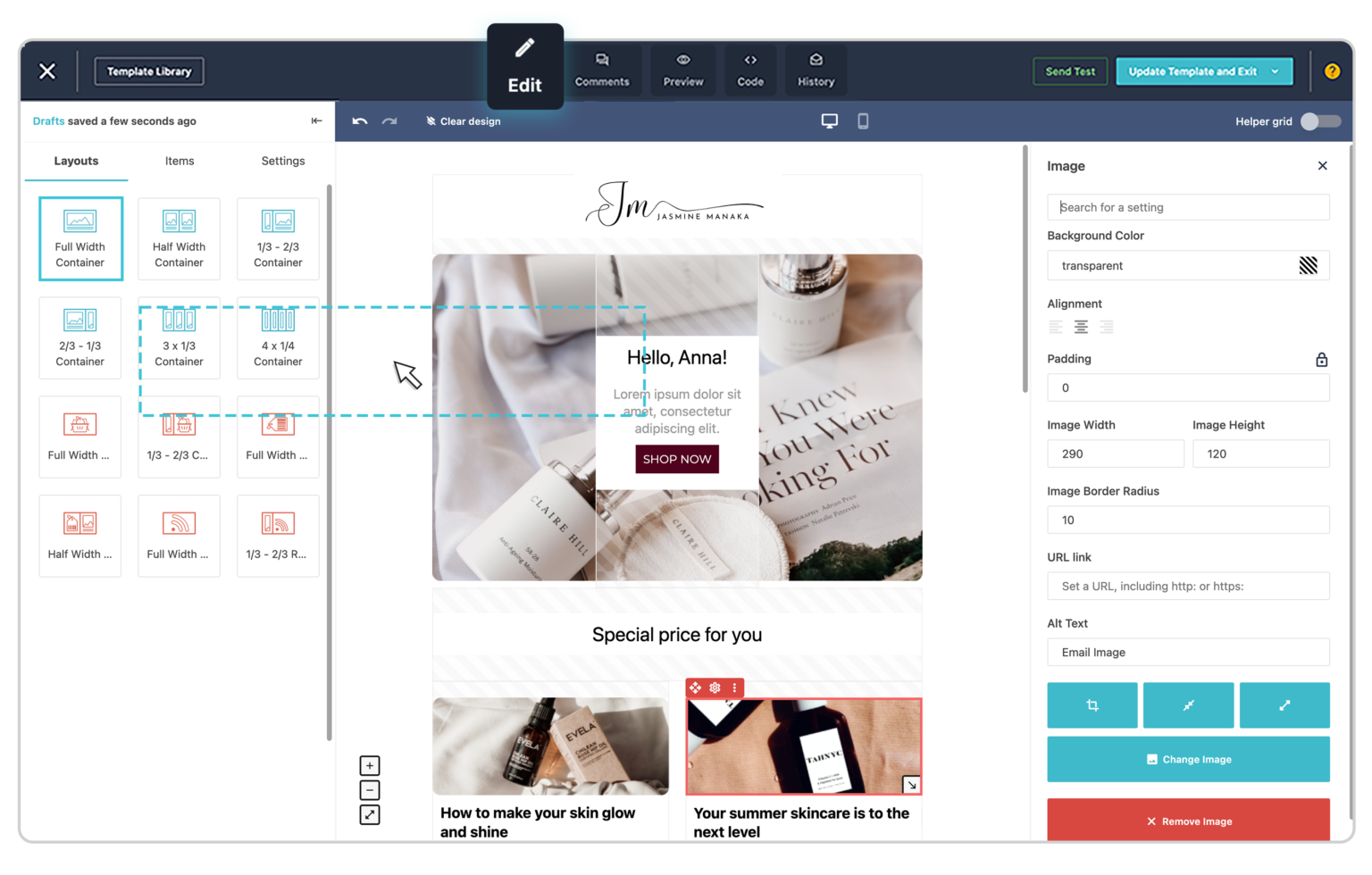
1. Drag And Drop Editor
The drag-and-drop editor is an essential part of user-friendly email marketing, and when comparing Moosend with tinyEmail, one can see that they have different approaches.
The editor in Moosend is well-known for its many useful features, such as its comprehensive analytics and plenty of editable templates.
Its ability to accommodate complex changes while keeping things simple makes it appealing to a wide range of users.
In contrast, tinyEmail prioritizes simplicity and minimalism, offering just the most important features with an intuitive interface—perfect for those who aren’t very tech-savvy.
While tinyEmail focuses on simple usability and Moosend on feature-intensive experiences, both systems encourage user involvement and community growth.
With the constant assistance and real insights offered by both systems, users may choose according to their complexity and detail preferences.
2. User Friendly Interface
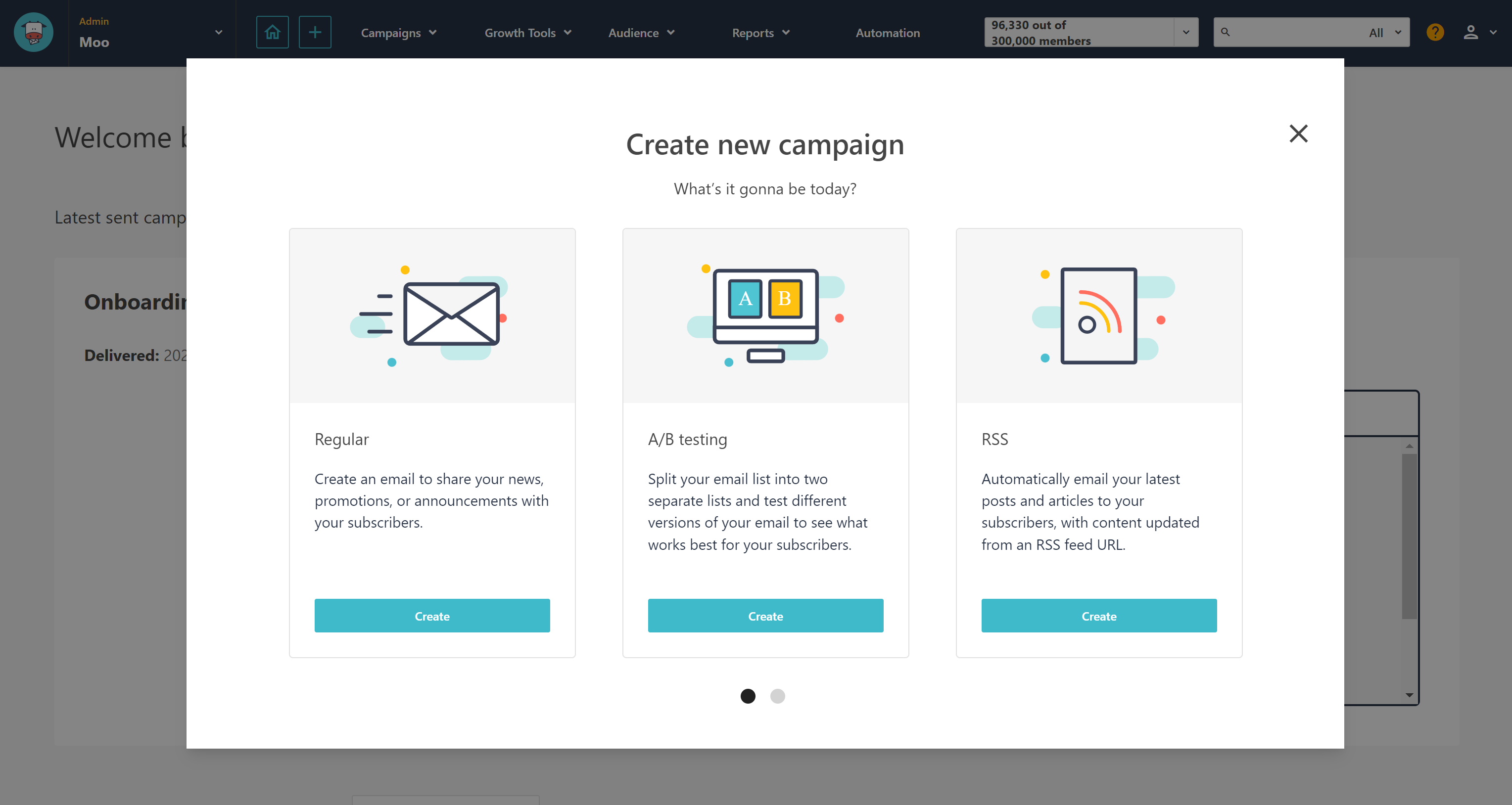
Moosend and tinyEmail both have user-friendly interfaces, but there are minute differences between the two that make them stand out.
Even those who aren’t very tech-savvy will feel at home on Moosend because to its well-designed and user-friendly interface, which makes navigating between functions a breeze.
By providing thorough summaries of campaign information, this top email marketing platform allows marketers to continuously improve tactics and results.
On the other hand, tinyEmail stands out due to its user-friendly layout that is tailored specifically for those who are new to email marketing.
The “color picker” and other simple customization options make it easy to achieve perfect brand alignment in all of your email designs, which improves the user experience.
Campaign design, subscriber management, and result analysis are all made easy and painless with the platform’s well-labeled buttons and clear instructions.
Moosend provides a more comprehensive and feature-rich experience, while tinyEmail stands out with its easy-to-understand interface, making sure that all users feel welcome and supported on their email marketing paths.
3. Email Marketing Tool
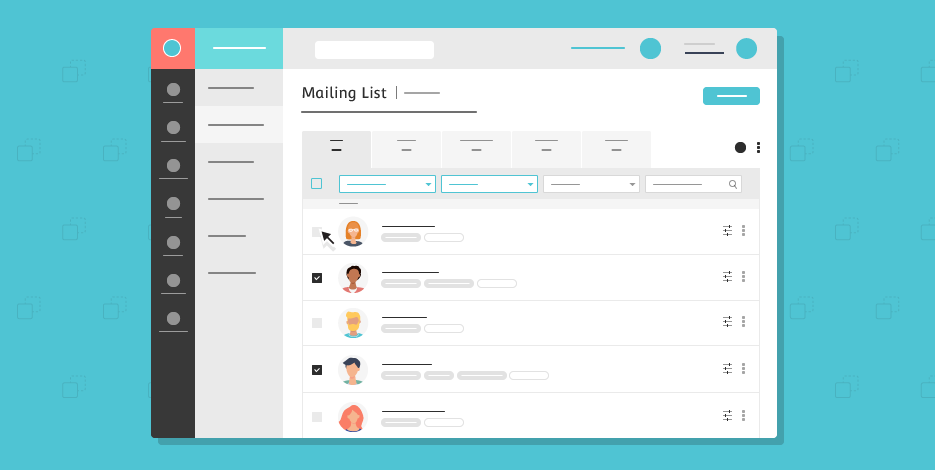
Though they take different techniques, Moosend and tinyEmail are both powerful email marketing platforms.
When discussing automation and AI-powered solutions, tinyEmail stands out with its “Tiny Einstein” AI writer. It’s great at creating attention-grabbing subject lines and email content, with the goal of dramatically increasing open rates.
The comprehensive platform of Moosend, on the other hand, demonstrates its adaptability by providing customers with a spectrum of tools to enhance their marketing efforts with the integration of services like live chat assistance and landing pages.
An extra selling point is the 30-day free trial that doesn’t need a credit card. This gives potential customers plenty of time to explore the platform and see what it can do before committing.
Email Marketing Campaigns
By comparing tinyEmail with Moosend, we can get to the heart of what sets each service apart in their Email Marketing Campaigns functionality.
Moosend offers a seamless combination of editable templates and comprehensive statistics, with the goal of enabling customers to build effective campaigns and monitor minute aspects of success.
On the other hand, tinyEmail emphasizes efficiency and simplicity, providing an easy-to-understand interface that lets anybody, regardless of technical skill, create successful campaigns.
From campaign conception to execution, this top email marketing tool prioritizes a flawless user experience while offering the necessities without overwhelming.
The difference comes down to methodology; tinyEmail caters to those who want a simple, simplified procedure, whereas Moosend provides a thorough, personalized experience for people who want a lot of control over their campaigns.
Users will be guided to the best platform for their marketing journey by balancing individual demands with the inherent capabilities of each.
4. Automation Capabilities
Moosend and tinyEmail both provide powerful automation features.
Automating email campaigns, nurturing leads through the customer experience, and saving time and money are all possible with Moosend’s extensive library of workflows and triggers.
This small company email marketing solution captures independence by letting companies plan frictionless encounters with their target demographic.
But tinyEmail’s Automated A/B testing function highlights the need of optimization.
By simply testing different aspects of their email campaigns, users can fine-tune each item to get the best possible outcomes.
Those that want to carefully match their methods with audience preferences must adopt this technique.
Marketing Automation
When looking at tinyEmail versus Moosend from a Marketing Automation perspective, it’s clear that both apps have their own unique strengths.
Moosend is a master of automation simplicity; it can simplify email campaigns to guarantee the smooth nurturing of leads all the way through the customer journey—essential for those who want a hands-off approach.
In contrast, tinyEmail is executed with great care and accuracy.
For those seeking accuracy and the best possible fit with their audience’s tastes, it offers fine-grained control over every aspect of the campaign, letting users match their plans harmoniously with audience expectations.
Automation Workflows
By combining the ease of use of Moosend with the pinpoint accuracy of tinyEmail, marketers get more leeway to craft outreach tactics that resonate with their target audiences and align with their unique branding narratives.
A thorough comparison of Moosend and tinyEmail shows that the two companies use different methods in the field of automated processes.
In Moosend, users are taken to a realm where processes are the epitome of efficiency and simplicity.
As a result, users may build relationships and engage audiences automatically via the orchestration of emails—a godsend for those who value efficiency over complexity.
On the other hand, tinyEmail emphasizes precision in its automated operation.
This platform is perfect for those who want to take their interactions to the next level, making sure that every communication aligns with the brand’s values.
Marketers that want to be exact in telling their brand stories must have this level of personalization.
Automation Tools
A range of cutting-edge features becomes apparent when comparing the automation tools of Moosend and tinyEmail.
Moosend conducts your marketing campaigns like a virtuoso conductor, arranging campaigns with flawlessly crafted automated processes that transform a click into a mesmerizing symphony of interactions and sales, creating an almost mystical experience.
On the other hand, tinyEmail uses cutting-edge AI to create email customization in ways never seen before, positioning itself as a game-changer in the customized experience architecture space.
With its expert data use and painstaking message creation, it effortlessly creates a personalized masterpiece that speaks to your brand’s voice.
5. Landing Page Builder
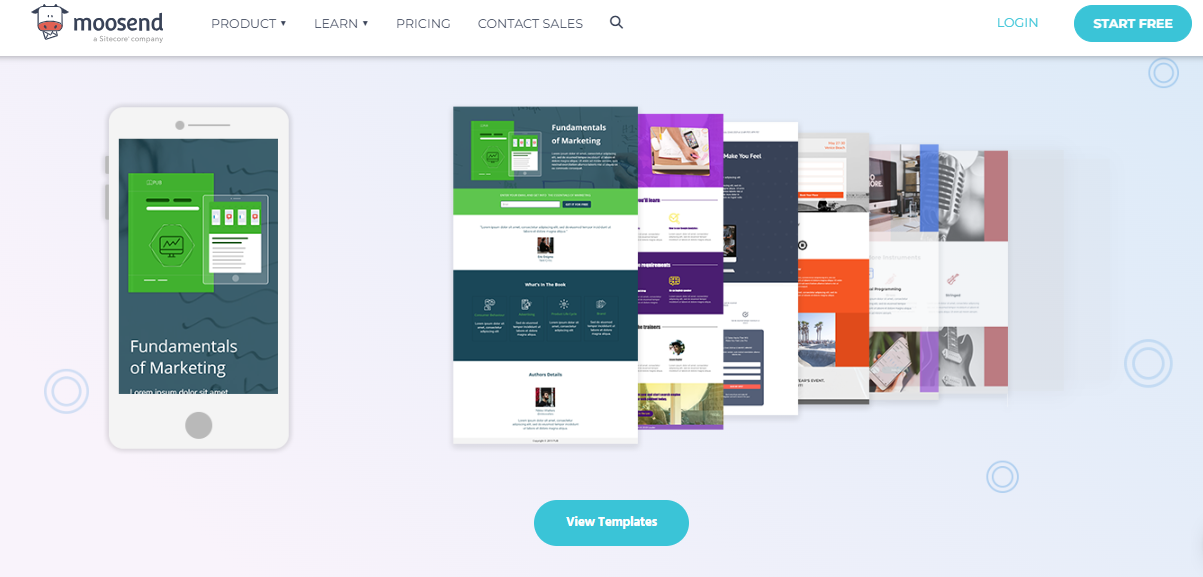
Are landing pages necessary for your company? With Moosend’s intuitive UI, you can easily create automated processes that convert data, transforming simple clicks into engaging experiences and harmonic conversions.
How about littleEmail? Instead of diving into the realm of landing page building, it decides to go a different route.
Refining and mastering its supplied services, this email marketing tool remains steadfast in its specialty and devotes its resources to inventing within its selected sectors.
6. Integration Capabilities
When companies think of Moosend’s integration possibilities, they should picture a symphony of connection, where different platforms, including E-commerce, CMS, and CRM, work together in perfect harmony.
Building bridges between various tools and your goals, it enables your organization to thrive without requiring complex developing abilities. The whole process is like a ballet of smooth interactions.
Alternatively, tinyEmail embraces hundreds of applications and services via native and third-party connectors, painting its canvas with a multitude of connection options.
Through the use of linked data from many sources, a more cohesive and educated marketing strategy may be created, made possible by this vast connectedness.
7. Customer Relationship Management
CRM, or customer relationship management, is the topic we will now discuss.
companies can easily connect with CRM giants like Salesforce using Moosend’s seamless integration capabilities. It connects to a range of platforms and technologies, allowing companies to flourish in their preferred surroundings.
But TinyEmail really comes into its own when it comes to its CRM connection features, which allow it to thread together all the different kinds of customer interactions and preferences.
8. Customizable Templates
When looking at tinyEmail vs. Moosend, both provide fascinating email templates that may be customized.
Businesses may save time and effort with Moosend’s 80+ professionally designed, elegant email newsletter templates that help them weave storylines in an attractive and expert way.
As an alternative, tinyEmail offers a wide variety of automation sequences and well created email templates to give your marketing efforts a real boost.
There is perfect harmony between the experience and the user interface.
Landing Pages Templates
When we compare tinyEmail’s landing page templates to those of Moosend, we find a quite different scene.
You can say goodbye to extra web designer costs using Moosend’s canvas and brush to make eye-catching landing pages quickly and easily. using Moosend, you can move, add, and rearrange elements to create the visual symphony you wish.
In contrast, tinyEmail takes a different approach as an email marketing platform; it does not provide any landing page designs or services.
9. More Advanced Features
The two platforms have shown us a lot of their important features thus far, but that’s not all. Other aspects worth highlighting in this Moosend vs tinyEmail comparison may be seen when we examine them together.
Reputation Management
Having a sterling reputation in the realm of email marketing is like having a golden key to open communication.
Moosend is here to help you out right now. It lets you send campaigns via its servers, so your messages will reach your audiences clearly and resonate with them. Plus, Moosend knows the recipient’s email client, so it can strengthen the sender’s reputation.
On the other hand, tinyEmail has you covered with its compliance controls and features that keep a sender’s perfect score intact.
Spam Folder
Both Moosend and tinyEmail offer effective features to reduce the likelihood that your email campaigns will be marked as undesirable when comparing them in terms of managing spam folders.
In order to keep all outgoing emails from ending up in the dreaded spam folder, Moosend provides optimization solutions.
In order to make sure that communication goes well, we use advanced approaches including optimizing the subject line and the content of emails.
When it comes to sender reputation, tinyEmail is just as strict as any other service, so you can be certain that your emails will arrive quickly and without hassle.
Advanced Analytics
Users can effortlessly track and modify plans using Moosend’s real-time statistics and insights on campaign success, making sure efforts are hitting the mark and producing the expected outcomes.
This powerful tool, when combined with Google Analytics integration, allows small companies to make more informed decisions based on data, which improves the overall effectiveness of their marketing.
In contrast, tinyEmail stands out for its comprehensive but easily understandable performance indicators.
With its help, customers can optimize their advertising plans with ease and make well-informed business choices based on insights that are both detailed and easy to understand.
Complex Automation Sequences
Both Moosend and tinyEmail have carved out unique niches for themselves in the world of complicated automation sequences.
Quick and efficient automation is the backbone of Moosend, which lets users build email sequences that are triggered by specified triggers.
With this, users may more easily orchestrate responsive email campaigns that are nuanced and relevant, allowing for more dynamic user interaction via targeted audience engagement.
On the other hand, tinyEmail provides a wide variety of automation sequences in addition to a wealth of attractively designed email templates.
Aesthetic appeal and smart message sequences may optimize engagement, and users can chose and modify their methods.
Users’ tastes and wants may be met by the flexible and finely-tuned implementations made possible by the multitude of options.
eCommerce Platforms Integration
With their flexible features, Moosend and tinyEmail are top-notch e-commerce platform integrators that can handle a wide range of online selling locations.
Moosend provides easy integration with several platforms, including WooCommerce and Magento.
This variety allows companies of all sizes to cater to the varying demands and tastes of their online shoppers, which in turn boosts sales via email marketing.
However, tinyEmail takes a more targeted approach by integrating natively with Shopify shops and enhancing the message features.
With this targeted connection, companies have access to robust technologies that may increase sales and income, all while making the Shopify user experience smoother.
Brand Kit
Businesses may learn about and showcase their assets “the Moo-way” with the help of Moosend’s brand materials.
This provides evidence of a methodical and transparent strategy for preserving brand identity and credibility, which in turn facilitates the clear and convincing expression of the brand’s core principles and purpose.
Conversely, tinyEmail allows companies to build active interaction with their audience by connecting their brands to them on a personal level via the creation of visually appealing communications.
Hinting at “Tiny Labs” implies that the company is always looking for new ways to automate and experiment with features, which might lead to some very cutting-edge solutions for how brands are represented and how audiences engage with them.
CRM Software
Moosend provides a simple experience, enabling integration without requiring complex development abilities, as stated before.
With the help of your chosen tools and platforms, you can easily manage your interactions with clients and other companies, which in turn drives development for your firm.
tinyEmail, on the other hand, streamlines integration by focusing on easy connection with different apps and CRM platforms.
User Experience
An easy-to-navigate design and pleasant user experience may also play a big role in how successful your company’s email marketing efforts are.
Moosend provides a platform with a user interface that is both simple and straightforward, making navigating a snap.
As if you stepped into a perfectly arranged space, where each tool had its designated spot, your work became a breeze.
Users may complete tasks with minimum effort because to tinyEmail’s intuitive drag-and-drop editor and user interface. Here, tinyEmail’s user interface takes first place because to its superior ease of use and intuitiveness for beginners.
Pricing
It could be intimidating to go out into the unknown world of email marketing. You may optimize your email marketing efforts using Moosend and tinyEmail, which provide reasonable price options for small companies and enterprise pricing structure. It’s an adventure worth every dime.
In the end, it all comes down to personal choice, needs, and budget when evaluating the prices of various email marketing systems.
Moosend Pricing

With Moosend’s free edition, which is available for 30 days, you can begin developing your email marketing campaigns immediately and have unlimited access to all of the platform’s features. Moosend also has price plans that are easy for the wallet.
- Pro: $9/month for 500 members and up
- Enterprise: Custom pricing structures
tinyEmail Pricing
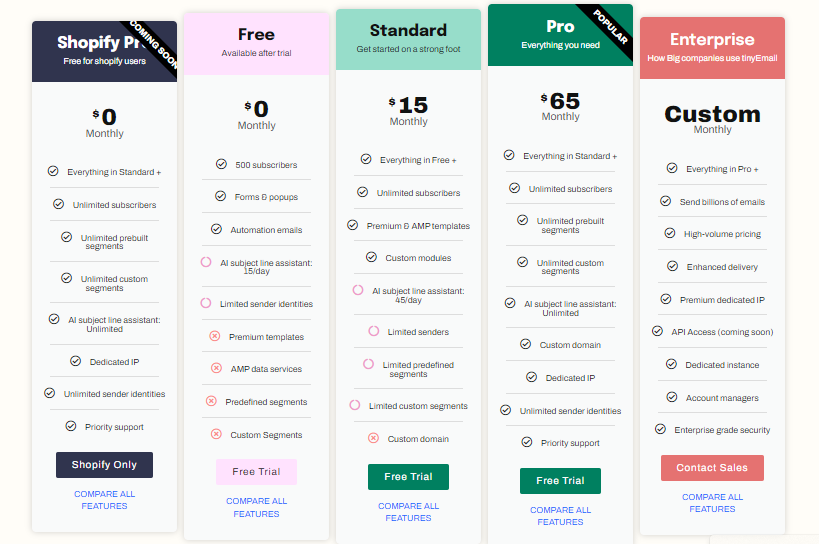
A bare minimum for your email marketing strategy? With tinyEmail, you may get a free account with up to 500 subscribers. Plus, they provide affordable options with amazing functionality. They provide a free, fully functional 7-day trial that you may start using right now.
- Free Plan: $0 per month for 500 members
- Standard Plan: $15/month for all features (including unlimited subscribers, premium and AMP templates, and custom modules) with unlimited free.
- Pro Plan: To get all the features of tinyEmail’s Standard plan plus unlimited subscribers, prebuilt segments, custom segments, AI subject line helper, custom domain, dedicated IP, sender identities, and priority customer support, the Pro plan costs $65 per month.
- Enterprise: Custom pricing structures
Moosend vs tinyEmail: Analysis of Pros And Cons
Pros of Moosend:
Ease of utilize: Any user, regardless of experience level, will be able to navigate and utilize the interface with ease.
A wide variety of integrations to different systems provide user freedom.
Marketing procedures may be greatly simplified and streamlined with the use of automated workflows.
Cons of Moosend:
There isn’t a ton of variety in the available templates, which limits your ability to express yourself creatively.
Customer Service: It may not be up to snuff for some people, particularly during busy periods, leading them to suggest that it is not a responsive customer service choice.
Features for Advanced Users: Some users may choose features with more complex capabilities and granular control over modification.
Pros of tinyEmail:
Engine for customization: Provides innovative customization features that boost user involvement.
Ensure compliance at a high level by avoiding the spam folder and keeping a spotless sender reputation.
Integrates Without a Hitch with Customer Relationship Management Systems: Simplifies business processes by connecting with a wide range of CRMs.
Cons of tinyEmail:
Lack of Landing Pages: Not having this option might make it harder to create campaigns that work together.
Interface: The user experience might be significantly affected if certain users view the interface to be less intuitive.
Having fewer possibilities for automation sequences may reduce the breadth and depth of marketing efforts.
Moosend vs tinyEmail: Finale Thought
If you’re new to basic email marketing, you could be overwhelmed by the sheer number of programs available. We hope that our comparison of Moosend and tinyEmail has provided you with some useful insights.
Thanks to their user-friendly interfaces, powerful marketing tools, and affordable rates, Moosend and tinyEmail both provide unique automation capabilities and features that make for a distinct and enjoyable user experience.
Written for a wide range of readers, from novices to seasoned pros, this post compares and contrasts two popular email marketing platforms: Moosend and tinyEmail. It does so in a clear and succinct manner, touching on topics like user interface, automation workflows, integration capabilities, and more.
This blog aims to provide consumers clear, succinct, and relative information to help them make an educated selection based on their specific requirements and tastes, since both platforms have their own distinct set of pros and cons.
